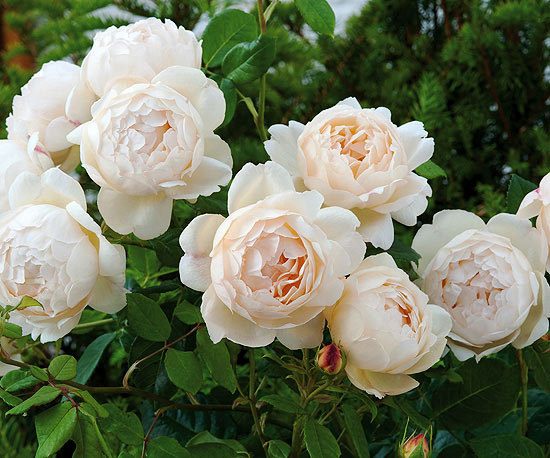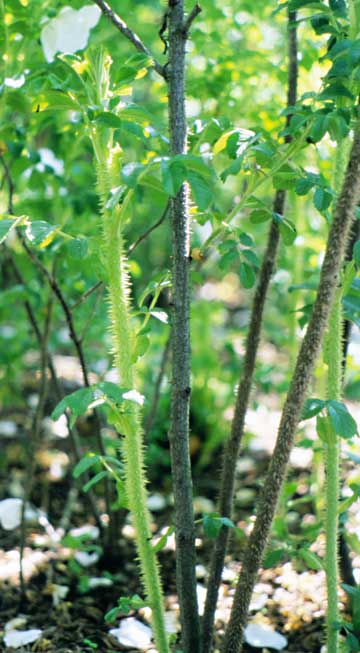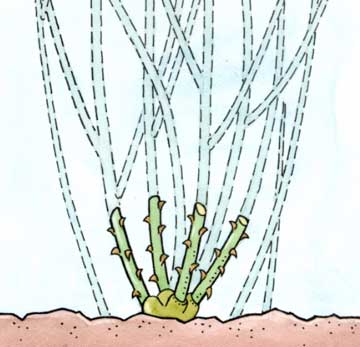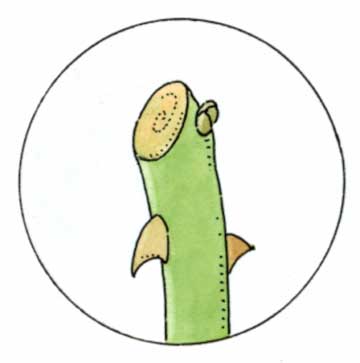






Pruning intimidates some gardeners. When you understand the reasons for making the cuts, pruning becomes less daunting. Here are the reasons to prune.
Health: The dead or damaged canes of any rose should be cut back to green wood in late winter or early spring, before the plant resumes growth. Remove diseased canes when you notice them. Improve air circulation by removing canes that grow into the center of the plant.
Appearance: Bushy Modern roses need help to maintain their compact, open form. Heirloom roses require less pruning because their lax, twiggy look is part of their charm. Deadheading, or cutting off spent flowers, encourages plants to rebloom.
Control: Some roses grow with wild abandon. Keep them within bounds by pruning their tips or entire canes anytime.
continue reading below
1. A little pruning: Every time you cut a rose bloom to bring it indoors, you prune the plant. This is mild, compared to pruning at the beginning of the season. Roses grow from the point where they are cut, so consider the overall shape of the plant as you snip.
 Prune canes that appear weak or
broken.
Prune canes that appear weak or
broken.
2. Healthy cuts: Healthy canes appear green or reddish. Old and dying canes turn brown. Prune out diseased, weak, broken, or dead canes whenever you see them. Cut them back to green wood or close to the bud union (a swelling at the base of the plant where the canes join the roots).
 Aim for a vase-shape bush.
Aim for a vase-shape bush.
3. Overall look: When pruning roses, cut out canes that cross, saving the better of the two. On Modern or grafted roses, prune away suckers, or canes that arise from the rootstock, rather than from the plant budded or grafted onto the rootstock. Aim for a vase-shape bush with an open center. Prune to keep the plant symmetrical and balanced. Arching and climbing roses require little pruning, in general. Train them to fulfill their purpose, whether growing on a fence, an arbor, or a pillar, by pruning after they bloom. Remove their old and weak canes.
 Slant cut away from bud to
encourage growth.
Slant cut away from bud to
encourage growth.
4. Proper cut: Cut canes at a 45-degree angle just above a leaf bud (swelling on the cane). Slant the cut away from the bud, to encourage growth outward. Clean pruners after every use to prevent the spread of disease. Keep pruners sharp to make clean cuts.
Copyright © www.100flowers.win Botanic Garden All Rights Reserved